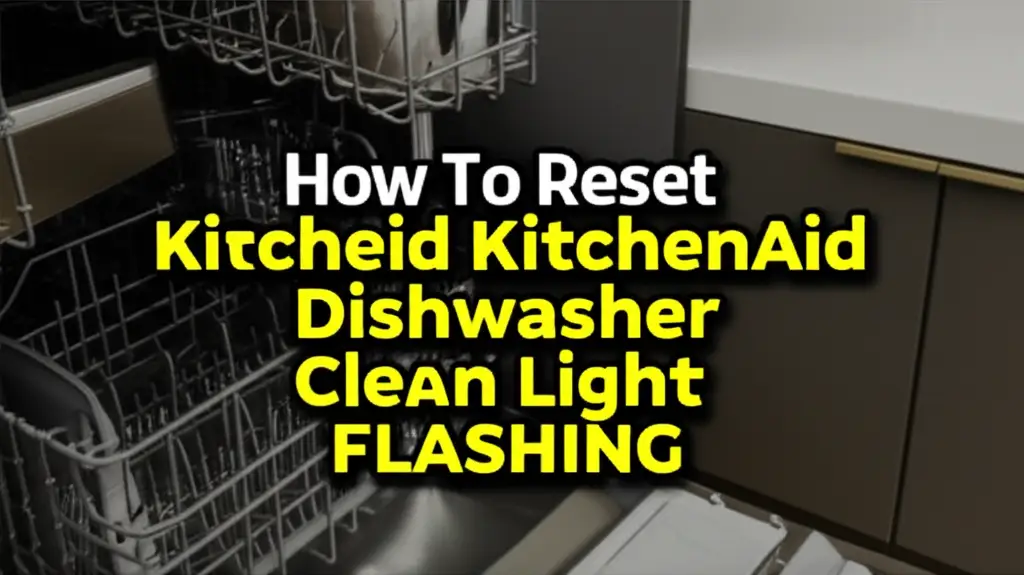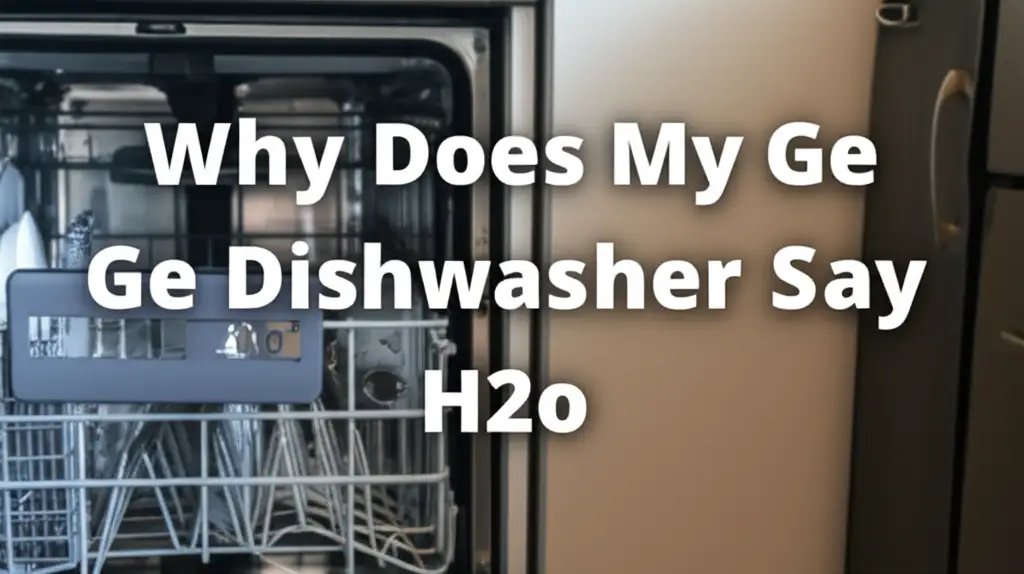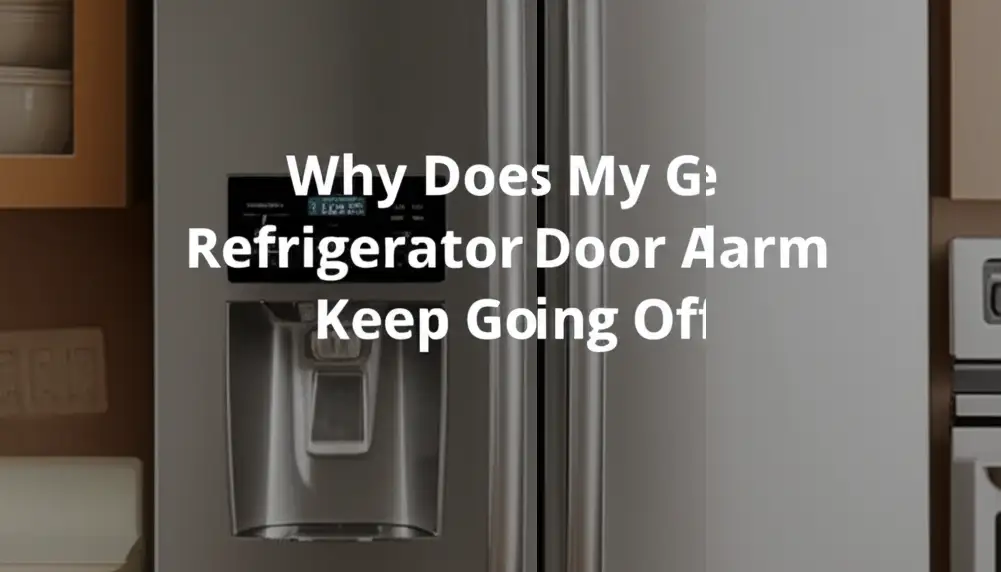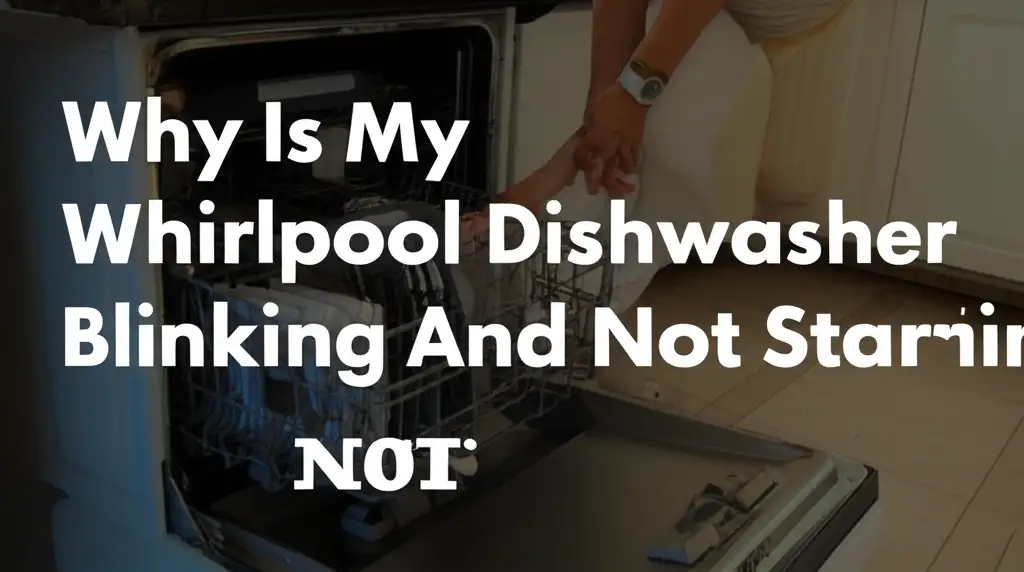· Davia Murnell · Appliance Troubleshooting · 22 min read
How To Reset Kitchenaid Dishwasher Clean Light Flashing

Reset Your KitchenAid Dishwasher: Fixing the Flashing Clean Light
It happens to many of us. You open your KitchenAid dishwasher, expecting to see a silent, finished cycle, but instead, the “Clean” light flashes. This can be confusing. Is it clean, or is something wrong? A flashing clean light on your KitchenAid dishwasher usually signals a problem. It means the dishwasher needs your attention.
This guide helps you understand why your KitchenAid dishwasher clean light flashes. We will walk through common reasons and simple steps to fix it. You will learn how to reset your dishwasher effectively. We cover everything from quick power cycles to deeper troubleshooting. Let’s get your dishwasher working properly again.
Takeaway
- Perform a Power Cycle: Disconnect power for five minutes, then restore it to clear glitches.
- Check Filters and Drain: Clean the filter and ensure the drain hose is clear.
- Inspect Float Switch: Make sure the float switch moves freely and is not stuck.
- Look for Error Codes: Consult your manual if an error code accompanies the flashing light.
A Quick Answer to Your Flashing Clean Light
To reset a KitchenAid dishwasher with a flashing clean light, first try a simple power cycle. Unplug the dishwasher or flip its circuit breaker for five minutes. Restore power. If the light persists, check for drainage issues, dirty filters, or a stuck float switch. These often cause the light to flash.
Understanding Your KitchenAid Dishwasher’s Flashing Clean Light
When your KitchenAid dishwasher’s “Clean” light starts flashing, it is sending a specific message. This signal indicates more than just a completed cycle. Instead, it points to a problem within the appliance. This issue prevents the dishwasher from operating correctly. It might be a minor glitch or a significant malfunction.
Manufacturers design these lights to alert users. The light system serves as a diagnostic tool. A steady “Clean” light means the cycle finished and dishes are clean. A flashing light tells you something different. It signals an interruption or an error condition. You cannot ignore this signal.
Common reasons for a flashing clean light involve system errors. These can relate to water drainage, water filling, or sensor malfunctions. Sometimes, a power surge might cause the control panel to glitch. Other times, a component needs cleaning or repair. You might even hear your KitchenAid dishwasher beeping and clean light flashing alongside the light. Understanding this signal helps you diagnose the problem faster. This helps you choose the right repair steps.
Basic Steps to Reset Your KitchenAid Dishwasher
The first step in addressing a flashing clean light is often a simple reset. This can clear temporary errors. Think of it like restarting a computer. It often resolves minor software glitches. There are two main ways to reset your KitchenAid dishwasher. Both methods are easy to do.
Power Cycle Your Dishwasher
A power cycle is the most common and effective initial reset. It completely removes power from the dishwasher. This allows the control board to reboot. The process is simple and requires no tools.
- Locate the Power Source: Find your dishwasher’s power plug. It is usually under the sink. If you cannot find the plug, locate the circuit breaker. This breaker controls the dishwasher’s power. It is in your home’s main electrical panel.
- Disconnect Power: Unplug the dishwasher from its outlet. If using the breaker, flip the dedicated dishwasher breaker to the “Off” position.
- Wait: Leave the power disconnected for at least five minutes. This time allows the control board to fully discharge any stored electricity. It clears any error codes.
- Restore Power: Plug the dishwasher back in. If using the breaker, flip it back to the “On” position.
After restoring power, check the clean light. If the flashing stops, the issue was a temporary glitch. You should be able to start a new cycle. This quick reset often solves many problems.
Control Panel Reset Method
Some KitchenAid models offer a control panel reset. This method varies by model. It often involves pressing specific button combinations. Check your owner’s manual for precise instructions.
A common sequence involves pressing “Cancel/Drain” or “Start/Reset” buttons. You might need to press and hold them for a few seconds. This action signals the control board to clear its current state. If your model has no dedicated “Reset” button, try the “Cancel” button. Pressing “Cancel” typically aborts the current cycle. It should also clear most error codes. After pressing, wait a moment. The dishwasher should then return to a ready state. If the light continues to flash, the problem might be more than a simple glitch.
Remember, always consult your owner’s manual first. It has the most accurate reset information for your specific model. These basic resets are your first line of defense against a flashing clean light. If the problem persists, move on to deeper troubleshooting.
Common Reasons for a Flashing Clean Light
A flashing “Clean” light on a KitchenAid dishwasher signals an underlying issue. It is not just a random occurrence. Understanding the common culprits helps you pinpoint the problem. Most issues relate to water management or sensor errors. These problems prevent the dishwasher from completing its cycle.
Drainage Problems
One of the most frequent causes is a drainage issue. If water cannot drain properly, the dishwasher stops. It may signal an error by flashing the clean light. This prevents overflowing and protects your floor.
- Clogged Drain Filter: The filter collects food particles. If it gets too dirty, it restricts water flow. This causes water to back up.
- Kinked or Blocked Drain Hose: The hose carries dirty water away. A bend or clog in this hose prevents drainage. Food debris or grease can build up over time.
- Air Gap Clog: If your dishwasher uses an air gap on the sink, it can get clogged. This prevents proper drainage.
- Garbage Disposal Issue: If your dishwasher drains into a garbage disposal, it might be the problem. A newly installed disposal may have a knockout plug still in place. Old food in the disposal can also cause blockages.
When your KitchenAid dishwasher has water in the bottom, it usually indicates a drainage problem. This directly leads to the clean light flashing as a warning.
Water Fill Issues and Float Switch Malfunction
The dishwasher needs the right amount of water to operate. Problems with water filling can trigger the clean light.
- Low Water Pressure: Insufficient water supply to the dishwasher can cause problems. The dishwasher might not fill correctly.
- Inlet Valve Issues: The water inlet valve controls water entry. If it is faulty, water might not enter at all. Or, it might enter too slowly.
- Float Switch Problems: The float switch detects water levels. It is a safety device. If it gets stuck in the “up” position, the dishwasher thinks it is full. It then prevents water from entering. If it gets stuck “down,” it might not sense enough water. This leads to issues that trigger the light.
Sensor or Control Board Errors
Modern dishwashers use sensors to monitor operations. A faulty sensor can send incorrect signals. This can cause the clean light to flash.
- Turbidity Sensor: This sensor detects how dirty the water is. If it malfunctions, it can disrupt the cycle.
- Temperature Sensor: This sensor monitors water temperature. If it fails, the dishwasher cannot heat water properly. This stops the cycle.
- Control Board Glitch: Sometimes, the main control board has a temporary error. This can cause various lights to flash. A power cycle usually fixes these. If the board has a permanent fault, it needs replacement.
These common issues cover most reasons why your KitchenAid dishwasher’s clean light might flash. Knowing these helps you troubleshoot more effectively.
Detailed Troubleshooting for Drainage Problems
If your KitchenAid dishwasher clean light is flashing, and you suspect drainage issues, several components need your attention. Proper water drainage is crucial for a complete wash cycle. Blockages or malfunctions in the drainage system will always interrupt operations. Let us look at specific areas to check.
Inspecting the Dishwasher Filter
The dishwasher filter is a primary line of defense against clogs. It catches food particles and debris. If it becomes too dirty, it prevents water from draining properly. This often results in standing water at the bottom of the tub.
- Locate the Filter: Most KitchenAid dishwashers have a removable filter assembly. It is usually at the bottom of the dishwasher tub. It might be a cylindrical or flat screen component.
- Remove the Filter: Twist or lift the filter according to your manual’s instructions.
- Clean the Filter: Rinse the filter under running water. Use a soft brush or sponge to remove any stuck-on food or grease. You can use a mild dish soap if necessary. Ensure all debris is gone from both the coarse and fine filter screens.
- Reinstall: Place the clean filter back into its position. Make sure it locks securely. A loose filter can also cause problems.
Regular filter cleaning prevents many issues. It helps your dishwasher drain efficiently.
Checking the Drain Hose
The drain hose carries wastewater from the dishwasher to your home’s drain system. Any obstruction or kink here will cause drainage failure.
- Inspect for Kinks: Pull the dishwasher out slightly if possible. Look behind the unit for any sharp bends or kinks in the drain hose. Straighten any you find.
- Check for Blockages: Disconnect the drain hose from both the dishwasher and the sink drain or garbage disposal. Look inside the hose for blockages. You might use a thin wire or a snake to push out any debris. Be gentle to avoid damaging the hose.
- Ensure Proper Installation: The drain hose should have a high loop. This prevents dirty water from flowing back into the dishwasher. If it drains into a garbage disposal, ensure the knockout plug is removed. This plug is a common oversight during new installations.
Proper drain hose setup is critical. A simple kink can cause major problems.
Examining the Air Gap (If Applicable)
Some plumbing codes require an air gap for dishwashers. This small cylindrical fitting sits on your kitchen sink or countertop. It prevents wastewater backflow into the dishwasher.
- Locate the Air Gap: It is usually a chrome or colored cap on your sink.
- Remove the Cap: Unscrew or pull off the decorative cap and the inner cover.
- Clear Obstructions: Look for any food debris or slime inside the air gap. Use a paper towel or a small brush to clean it out. Flush with water to ensure it is clear.
- Reassemble: Put the covers back in place.
A clogged air gap can severely restrict drainage. Cleaning it is a quick fix. Addressing these drainage components will often resolve the flashing clean light issue. If you still have problems, it means a deeper issue is at play.
Addressing Water Fill and Float Switch Issues
After checking drainage, the next area to investigate is the water filling system. A KitchenAid dishwasher needs an adequate water supply. It also needs accurate water level sensing. Problems in either area can trigger the flashing clean light. Let us explore these components.
Verifying Water Supply and Inlet Valve
The dishwasher cannot work without proper water flow. If the water supply is weak or interrupted, it affects filling.
- Check Water Supply Valve: Locate the water shut-off valve for your dishwasher. It is usually under the sink. Make sure the valve is fully open. A partially closed valve restricts water flow.
- Inspect Water Line: Look for any kinks or damage in the water supply line. Straighten any kinks.
- Test Water Pressure: Open the kitchen faucet to check your home’s water pressure. Low house water pressure can affect all appliances. If the faucet water pressure is low, contact a plumber.
- Consider the Water Inlet Valve: The water inlet valve controls water entry into the dishwasher. If it is faulty, it might not open fully or at all. It can also get clogged with mineral deposits. You can test it with a multimeter for continuity, but this might require a technician. If you hear no water filling sound during a cycle, this valve is a prime suspect.
A functional water supply and inlet valve are fundamental. They ensure your dishwasher gets the water it needs to operate.
Inspecting and Cleaning the Float Switch
The float switch is a crucial safety device. It prevents the dishwasher from overflowing. It detects the water level in the tub. When the water level rises, a float rises with it. This float activates a switch. If the switch gets stuck or malfunctions, it causes problems.
- Locate the Float Switch: The float switch is usually a small plastic cap or tower. You will find it in the bottom of the dishwasher tub, often near the front.
- Check for Obstructions: Food debris, fallen silverware, or even a dislodged dish can block the float. Make sure nothing is pressing down on it or preventing its free movement.
- Clean the Float and Housing: Remove the float cap if possible. Clean the area around the float. Debris and soap scum can cause it to stick. Ensure the float moves freely up and down. Push it down gently and release it. It should spring back up without resistance.
- Test the Switch (Advanced): If you suspect a faulty switch, you can test it with a multimeter. This involves checking for continuity when the float is up or down. This step is best left to experienced DIYers or a professional.
A stuck float switch is a common reason for the clean light to flash. The dishwasher thinks the tub is full, even when it is not. This prevents the cycle from starting or continuing. Cleaning and ensuring its free movement often resolve this issue. If these steps do not fix the flashing light, the issue might be electronic.
Sensor and Control Board Diagnostics
When basic resets and mechanical checks do not resolve the flashing clean light, the problem often lies with the dishwasher’s electronics. Sensors and the main control board are vital for managing all operations. A malfunction in these components can lead to various error signals, including the persistent flashing light.
Understanding Sensor Functions and Failures
Modern KitchenAid dishwashers use several sensors. Each sensor plays a specific role in ensuring efficient cleaning and operation.
- Turbidity Sensor: This sensor, often located near the filter or drain, measures how dirty the water is. It helps the dishwasher determine the required wash cycle intensity and length. If this sensor becomes dirty or fails, it might send incorrect readings. This can cause the dishwasher to misinterpret conditions, leading to errors and a flashing clean light. Cleaning the sensor area, often part of general filter cleaning, can sometimes resolve minor issues.
- Temperature Sensor (Thermistor): This sensor monitors the water temperature. Proper heating is essential for effective cleaning and sanitization. If the thermistor malfunctions, the dishwasher might not heat water correctly or might detect an abnormal temperature. This often stops the cycle and triggers an error. Testing a thermistor requires a multimeter and knowledge of its resistance values, which are model-specific.
- Door Latch Sensor: The dishwasher will not start or continue if it thinks the door is open. A faulty door latch sensor can make the dishwasher believe the door is unlatched. This halts operation and might cause a clean light to flash. Ensure the door is firmly closed and latched. Check for any physical damage to the latch mechanism.
A faulty sensor sends bad information to the control board. This disrupts the wash cycle and prompts the dishwasher to signal a problem. Sometimes, a general system reset (power cycle) can clear minor sensor glitches. If the sensor is physically damaged or consistently providing incorrect readings, it likely needs replacement.
Troubleshooting the Main Control Board
The control board is the “brain” of your KitchenAid dishwasher. It processes information from sensors. It sends commands to components like the pump, motor, and heating element. A problem with the control board can manifest in many ways, including the clean light flashing.
- Signs of a Control Board Issue: Beyond the flashing light, other signs might point to a control board issue. These include unresponsive buttons, cycles not completing, or unexpected behavior. If your KitchenAid dishwasher has no power at all, it could be a power supply issue or a dead control board.
- Power Surges and Glitches: Power surges or fluctuations can sometimes damage or temporarily confuse the control board. A hard reset (power cycling) is the first step to resolve these temporary glitches.
- Diagnosing a Faulty Board: Diagnosing a truly faulty control board is difficult. It usually requires specialized tools and expertise. You might need to check for visible signs of damage, such as burnt components. If you have ruled out all other possibilities, and the issue persists, the control board is a strong suspect.
- Replacement: Replacing a control board is a significant repair. It involves accessing internal components and precise wiring. This is usually best left to a certified appliance technician. Control boards are also expensive parts.
Before jumping to a control board replacement, make sure you have thoroughly checked all other, simpler issues. These include power supply, water flow, drainage, and sensor functionality. A professional diagnostic can save you money and ensure the correct part is replaced.
When to Call a Professional Appliance Technician
You have tried all the basic resets and troubleshooting steps. You have checked the filter, drain hose, air gap, and float switch. You have even considered sensor issues and the control board. Yet, your KitchenAid dishwasher clean light continues to flash. This is the point when calling a professional appliance technician becomes the most practical and often most cost-effective solution.
Persistent Flashing Light After Troubleshooting
If the clean light keeps flashing despite your best efforts, it suggests a deeper problem. This might be an intermittent electrical fault. It could be a complex control board failure. It might also be an issue with an internal component that is hard to access or diagnose.
- Complex Electrical Issues: Diagnosing wiring problems or specific component failures (like a circulation pump or heating element) requires electrical testing tools. It needs a detailed understanding of the dishwasher’s wiring diagram.
- Specialized Tools and Knowledge: Technicians have specialized diagnostic equipment. They also have the training to interpret complex error codes. They can test individual components accurately. They know how to safely disassemble and reassemble your appliance.
- Safety Concerns: Working with electricity and water inside an appliance can be dangerous. There is a risk of electric shock or causing further damage. A professional ensures safety during the repair process.
- Warranty Considerations: Attempting complex repairs yourself might void your dishwasher’s warranty. A certified technician’s repair usually keeps your warranty intact. Some repairs are covered if your appliance is still under warranty.
Specific Error Codes
Sometimes, the flashing clean light is accompanied by specific error codes. Your KitchenAid dishwasher might display numbers or letters on the control panel. These codes pinpoint the exact problem.
- Decoding Error Codes: Your owner’s manual lists these error codes and their meanings. If you have lost the manual, you can often find it online. Knowing the code gives a clear direction for repair.
- Complexity of Resolution: Some error codes point to issues that are simple to fix. Others indicate serious component failures, such as a motor problem or a main control board malfunction. These require professional attention.
For instance, if your KitchenAid dishwasher clean light blinking is also paired with a specific error code, referencing your manual for that code is critical. The manual will often recommend calling service for certain issues.
When DIY is No Longer Viable
There comes a point when the cost or complexity of a DIY repair outweighs the benefits.
- High Cost of Parts: Replacing major components like the control board, motor, or main pump can be very expensive. Sometimes, the cost of parts plus your time makes professional service or even appliance replacement more sensible.
- Time and Effort: Some repairs are time-consuming and frustrating without the right experience. A technician can often complete the job much faster.
- Risk of Further Damage: Incorrect repairs can lead to more damage to your dishwasher. They might also create new problems.
- Peace of Mind: A professional repair comes with a guarantee. You get peace of mind that the job is done correctly.
Calling a professional technician provides expertise, safety, and efficiency. It is often the best choice for complex or persistent KitchenAid dishwasher issues. They can accurately diagnose and repair the problem, getting your dishwasher back to its best.
Preventative Maintenance to Avoid Future Flashing Lights
Preventative maintenance is key to keeping your KitchenAid dishwasher running smoothly. It helps you avoid the dreaded flashing clean light. Regular care prolongs your appliance’s life. It also ensures efficient operation. Here are essential maintenance tips to prevent future issues.
Regular Filter Cleaning
The filter is your dishwasher’s first line of defense against clogs. Food debris and grease accumulate here. A dirty filter leads to poor draining and can trigger error lights.
- Clean Weekly or Bi-Weekly: Depending on your dishwasher usage, clean the filter every week or two. If you wash many dishes with heavy food scraps, clean it more often.
- Simple Process: Most KitchenAid filters are easy to remove and rinse. Simply twist, lift, rinse under warm water, and scrub gently with a brush if needed. Reinstall securely. This small effort makes a big difference.
Proper Loading Techniques
How you load your dishwasher impacts its performance. Incorrect loading can block spray arms or prevent proper water circulation. This affects cleaning and draining.
- Avoid Overloading: Do not cram too many dishes into the dishwasher. Overloading blocks water flow. It prevents dishes from getting clean. It also hinders proper drainage.
- Position Dishes Correctly: Place large items on the bottom rack. Ensure they do not block spray arms. Face dirty surfaces towards the spray.
- Keep Vents Clear: Do not block the detergent dispenser or the air vent. This ensures proper soap distribution and drying.
Running Empty Cycles with Dishwasher Cleaner
Regularly cleaning the dishwasher itself helps remove grease, soap scum, and mineral buildup. This prevents clogs and keeps components working.
- Use Dishwasher Cleaner: Once a month, run an empty cycle with a dedicated dishwasher cleaner. These cleaners are designed to break down residues inside the appliance.
- Vinegar or Baking Soda: As an alternative, place a cup of white vinegar on the top rack. Run a hot cycle. Or, sprinkle baking soda on the bottom. Then run a short, hot wash. These natural cleaners help with odors and buildup.
Checking Drain Hose and Air Gap Periodically
Even if not clogged, periodically inspect your drain hose and air gap. Prevention is better than reaction.
- Drain Hose Inspection: Every few months, quickly check the drain hose behind your dishwasher. Make sure it is not kinked or crimped. Ensure the high loop is still in place.
- Air Gap Check: If you have an air gap, quickly remove its cap. Check for any minor debris buildup. Clean it out before it becomes a problem.
Maintaining General Appliance Health
Beyond these specific tips, general appliance care helps.
- Address Hard Water: If you have hard water, consider using a rinse aid. Hard water leaves mineral deposits. These can clog jets, sensors, and the heating element over time.
- Read Your Manual: Your KitchenAid owner’s manual has model-specific maintenance tips. It also details the meaning of your dishwasher’s specific lights and error codes. Referencing it can prevent many issues.
By following these preventative maintenance tips, you can significantly reduce the chances of your KitchenAid dishwasher clean light flashing. A well-maintained appliance performs better and lasts longer.
FAQ Section
Q1: Why does my KitchenAid dishwasher clean light keep flashing after a power reset?
A power reset clears temporary glitches. If the light keeps flashing, an underlying issue exists. Common causes include drainage problems like a clogged filter or drain hose, a stuck float switch, or a faulty sensor. You need to investigate these mechanical issues to find the root cause and fix it.
Q2: What does a flashing “Clean” light mean on a KitchenAid dishwasher?
A flashing “Clean” light on a KitchenAid dishwasher typically signals an error or a problem that interrupted the wash cycle. It does not mean the dishes are clean. Instead, it indicates that the dishwasher cannot complete its function due to an issue, such as a drainage failure or a sensor malfunction.
Q3: Can a dirty filter cause the KitchenAid dishwasher clean light to flash?
Yes, a dirty or clogged filter is a very common cause for the KitchenAid dishwasher clean light to flash. A buildup of food particles and grease in the filter restricts proper drainage. This can lead to standing water and prevent the dishwasher from completing its cycle, triggering the error light.
Q4: How do I access and clean the filter on my KitchenAid dishwasher?
Most KitchenAid dishwasher filters are located at the bottom of the tub. Twist or lift the filter assembly to remove it. Rinse it under warm water, using a soft brush to remove stuck-on debris. Ensure you clean both the coarse and fine mesh screens. Reinstall it securely after cleaning.
Q5: Is a flashing “Clean” light always an error, or can it be a notification?
While a steady “Clean” light indicates a completed cycle, a flashing “Clean” light on a KitchenAid dishwasher is almost always an error notification. It signals that something went wrong during the cycle or that a specific component is malfunctioning. It requires troubleshooting to resolve the issue.
Q6: When should I consider calling a professional for a flashing clean light?
You should call a professional if you have tried basic resets, cleaned the filter, checked the drain hose and float switch, and the light still flashes. This indicates a more complex issue, such as a faulty control board, pump, or other internal components that require specialized tools and expertise to diagnose and repair safely.
Conclusion
A flashing “Clean” light on your KitchenAid dishwasher can be frustrating. However, it is also a valuable indicator that your appliance needs attention. By following the troubleshooting steps outlined in this guide, you can often pinpoint and resolve the issue yourself. We have covered everything from simple power cycles to inspecting drain components, checking the float switch, and understanding sensor roles.
Remember, start with the easiest solutions first. A quick power cycle often clears minor glitches. If the problem persists, systematically check your dishwasher’s drainage system and water fill components. Regular maintenance, like cleaning the filter, will also prevent many issues before they start. If the KitchenAid dishwasher clean light flashing persists after all your efforts, do not hesitate to contact a professional appliance technician. They have the expertise to handle complex problems safely. Taking proactive steps ensures your dishwasher runs efficiently and quietly for years to come.





